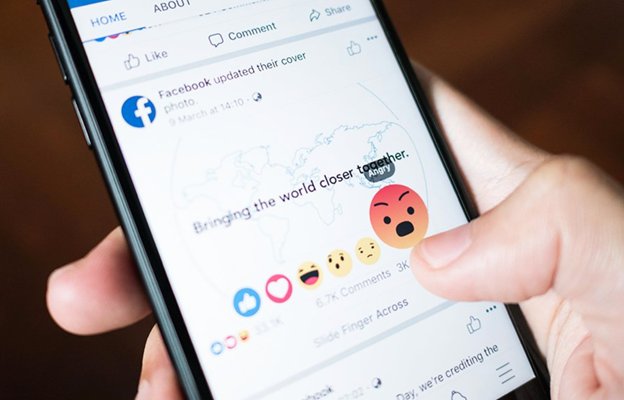Millions of new posts appear on social media every day. Most of them get lost in the news feed. Readers can skip even a useful and interesting post if it is not written correctly and is difficult to understand.
Let’s remember the main differences between social media posts.
- High competition. Posts in the news feed are in a continuous stream. We scroll through the feed and stop only at what interests us. It is difficult to stand out in this stream.
- Smart tape. All posts go through the qualification of the smart feed. It is needed to filter out useful and interesting content for the user. The more likes, comments, and reposts a post gets in the first hour, the higher it will appear in the feed of friends and subscribers.
- The news feed is not Yahoo or Google. In social networks, the reader is not looking for information, but the information is looking for the reader.
- Lack of officiality. A social network is a place where you relax, talk, text each other with funny stickers (by the way, you can create your own once with Crello’s sticker maker) watch amusing pictures, and discuss something interesting.

Shorter Posts Readability
In 2016, we learned how people interact with content of diverse sizes on different social networks. Short posts are popular on Facebook, especially video posts. On Instagram, users often interact with posts where the amount of text is medium or large (about 1000 characters or more). The maximum amount of text on Instagram is 2000 characters.
In general, short posts are more popular than long ones. In huge publications, most of the text is hidden under the cut. It’s even more difficult with posts longer than 3000 characters on Facebook. Posts can be opened on a new page: the reader needs to click “Read more”. Tell in a few sentences why the post is interesting and what the subscriber will learn by reading it in full.
It does not mean that big articles are unnecessary. The main idea of the post is the benefit to the reader. If you write 5000+ characters posts and they are well written, useful, and interesting, then there must be readers for sure. But advertising posts are best kept short. Otherwise, many people will simply not get through to your proposal, and you will be wasting money.
Way of Writing
Write in easy, conversational, simple language. This is the ideal way for social networks: users communicate here, they don’t want to read official texts from companies. This kind of language is not necessarily simple. Stop trying to be “in the blackboard”, because it really looks fake and doesn’t attract the reader. Make sure to read the finished text aloud, if it sounds unnatural, edit it again.

Personal Contacting
Social networks are a platform for human-human interaction. Therefore, Eva Katz (founder of the Digital Bandito studio) suggests writing in the first person in the instructions to manage Facebook communities. Instead of “office”, “company”, “management” use “we”, “me”, “our”.
Your personal appeal to users works well. Of course, it is not always acceptable. But turning to “you” without familiarity creates some trust and makes the post like a conversation between friends.
Images and Videos
Photos and videos serve two goals: 1st is complementing the post and increasing its visibility in the feed. Usually, people first check out the picture, then look at the headline, and only then move their gaze to the post itself. In a perfect way, videos and images show what you are talking about in the post. Tell users that you have moved to a new office, then show the photo of the office. You had an interview with a famous person, then posted a selfie with them. Talk about your product, attach a video preview.
Here’s what Tilda specialists say about optimal sizes for images:
- For Facebook, the optimal ratio is 1200×630. You can use square photos, but vertical ones are undesirable.
- For Instagram – a 1:1 square with sides 1080×1080.
- By the way, on Facebook, short posts can be placed on a graphic background. It turns out to be a picture-text.
Seeking of Feedback
Feedback is likes, comments, reposts. The more of these interactions, the higher the news feed algorithms evaluate the post. Lead Generation Academy (LGA) suggests adding a call to action at the end of the post: A call to repost or like. It can be a banal phrase: “if it was useful – like it!”
CTA for discussion. Let readers share their emotions and opinions in the comments. Ask them personally what they think about this post, whether something similar has happened to them, how they solve certain problems. The tip: you can write the very first comment by yourself. It will make readers get involved in the discussion. A survey is also a way to collect feedback. However, poll posts always get fewer likes. Readers rarely take more than one targeted action, so either a like or a vote in a poll.

Easy Reading Posts
Roy Clarke, in his book 50 Writing Techniques, advises alternating between long, short, and medium sentences. They complement each other well and the lyrics sound better.
Other important elements:
- To make it eye-catching, type it in caps (capital letters). The headline should attract attention, indicate the benefits for the reader, and intrigue. Editor Eva Katz recommends using the 6 hats method when composing your headline.
- Separation of sections. If the post is really long, you can visually split it into a few separate blocks. Use a combination of asterisks (*****), a dash, or other symbols for this.
- Figures and numbers. Write numbers in numbers, not words. “6” is simpler and clearer than “six”, even if it is not according to the rules of your language. Separate large numbers with spaces or commas: not “1442088”, but “1 442 088”.
- You can decorate the lines of the list with dashes, numbers, the bullet symbol “•” or emojis.
- They make the text livelier, and if they are well-chosen, they illustrate what is written. Emojis can also serve as paragraph separators, and they are also convenient for denoting lists. Two conditions: select emoticons in the theme and do not put them in every line. A large number of emoticons make it difficult to read, not simplify.
Conclusion
You can’t generate a post accordingly with a recipe that will attract thousands of likes and thousands of reposts. You never know which post will become popular and which will disappear far into the feed. But you can make the publication potentially viral and then it might be popular if you are lucky.
